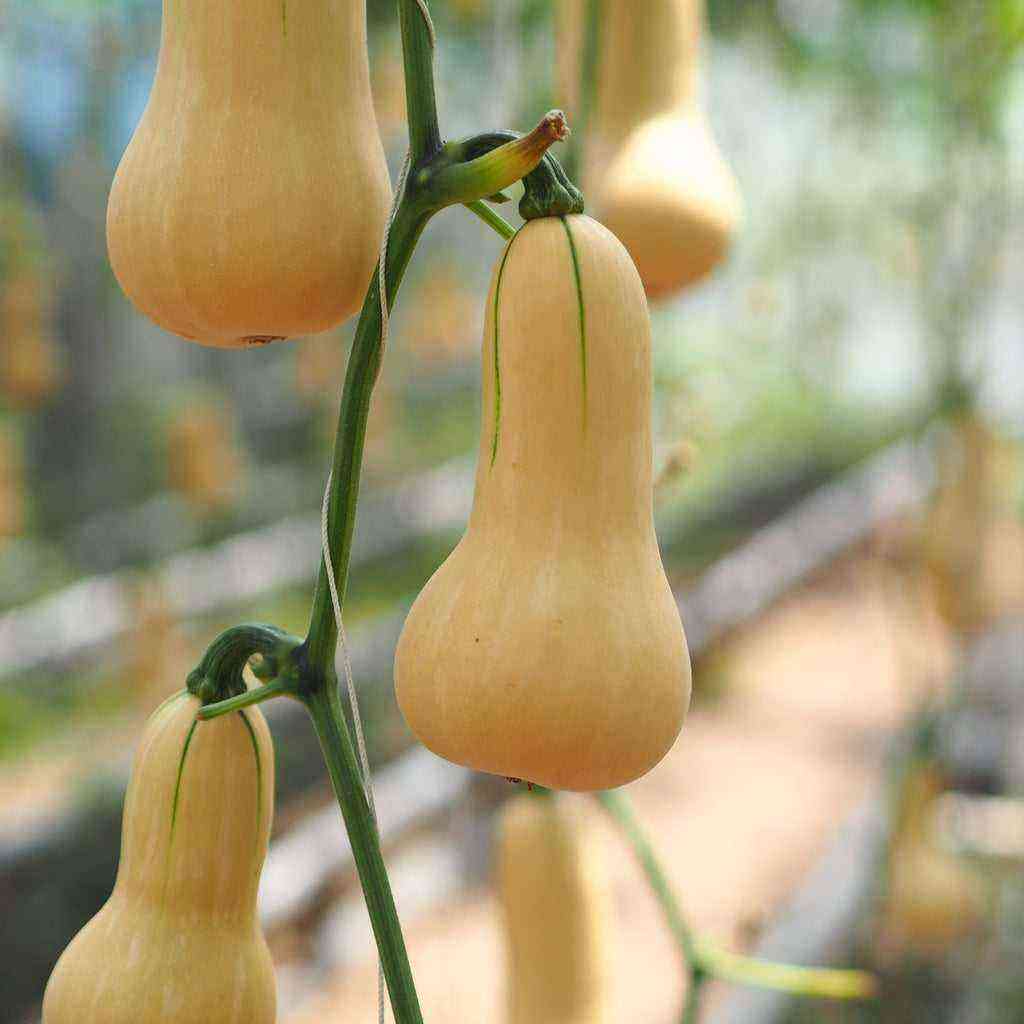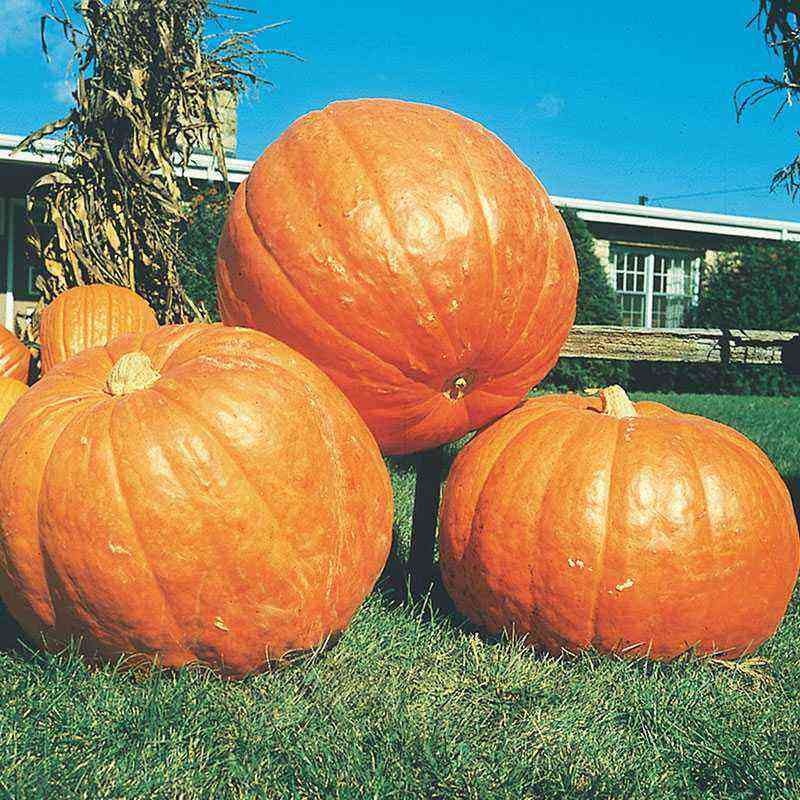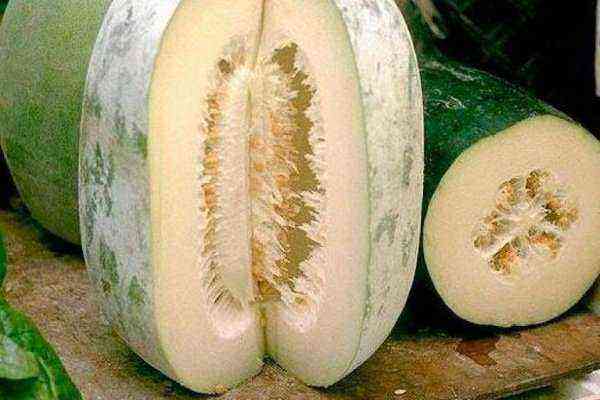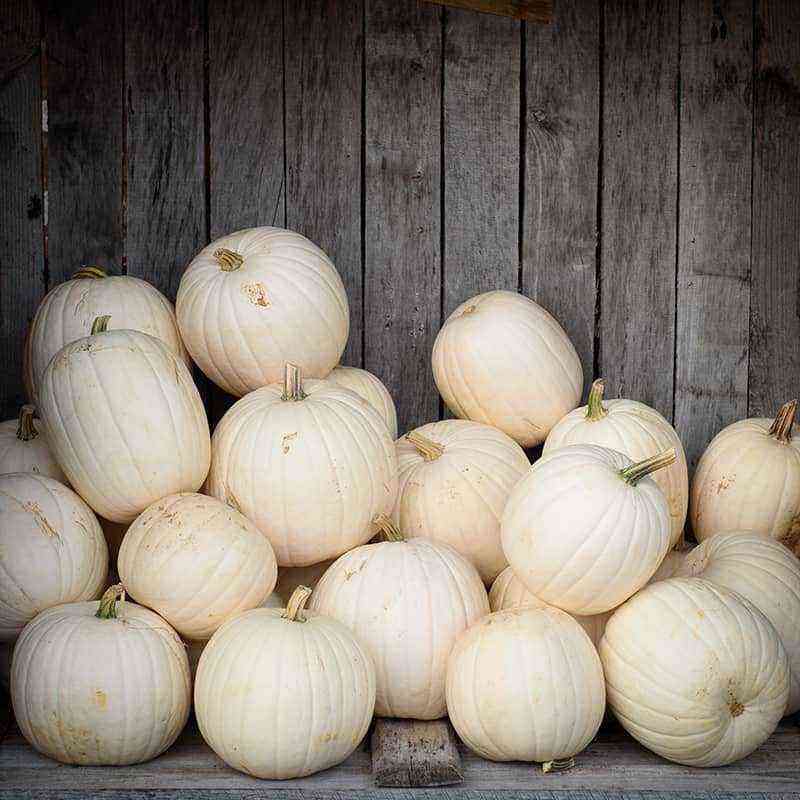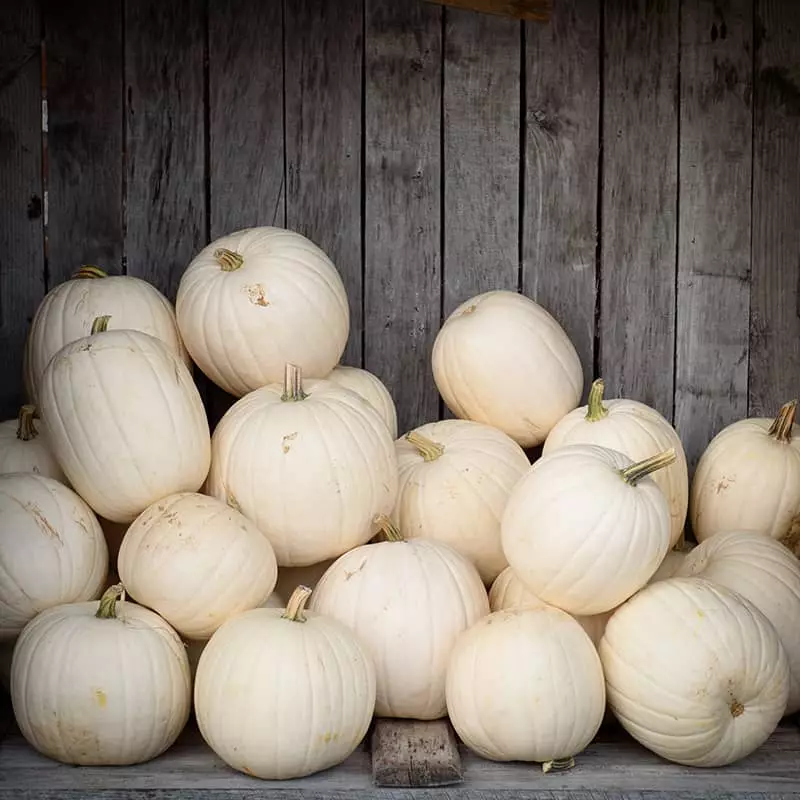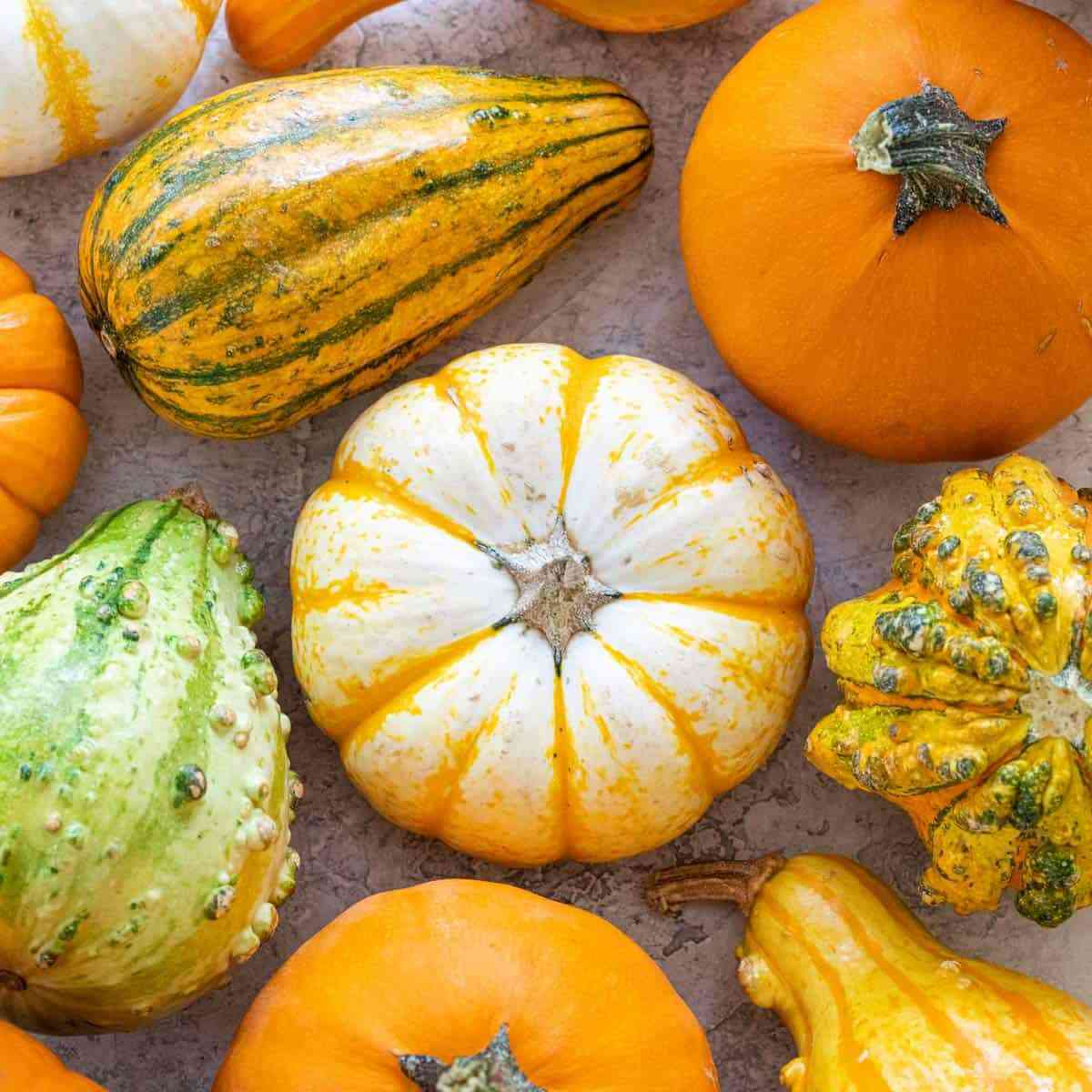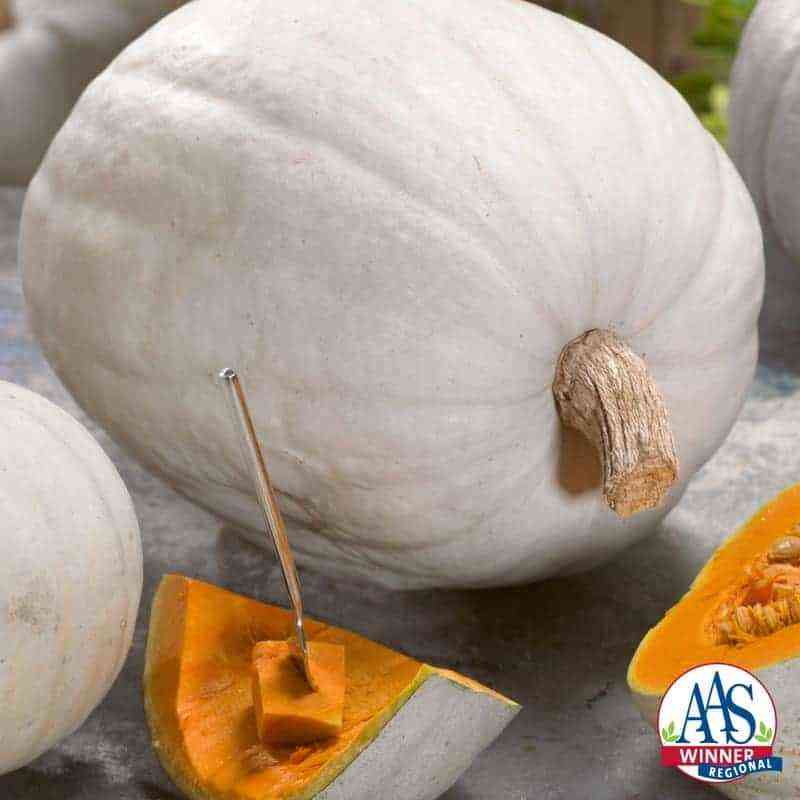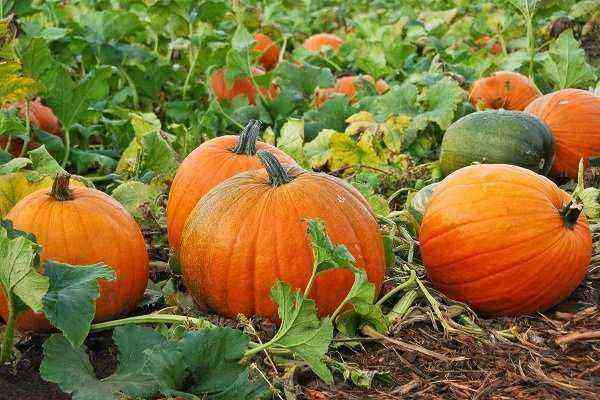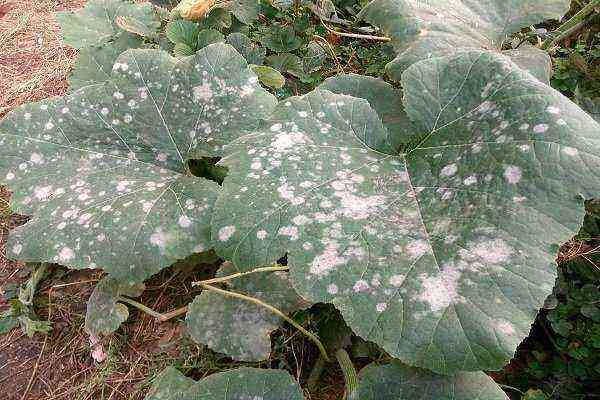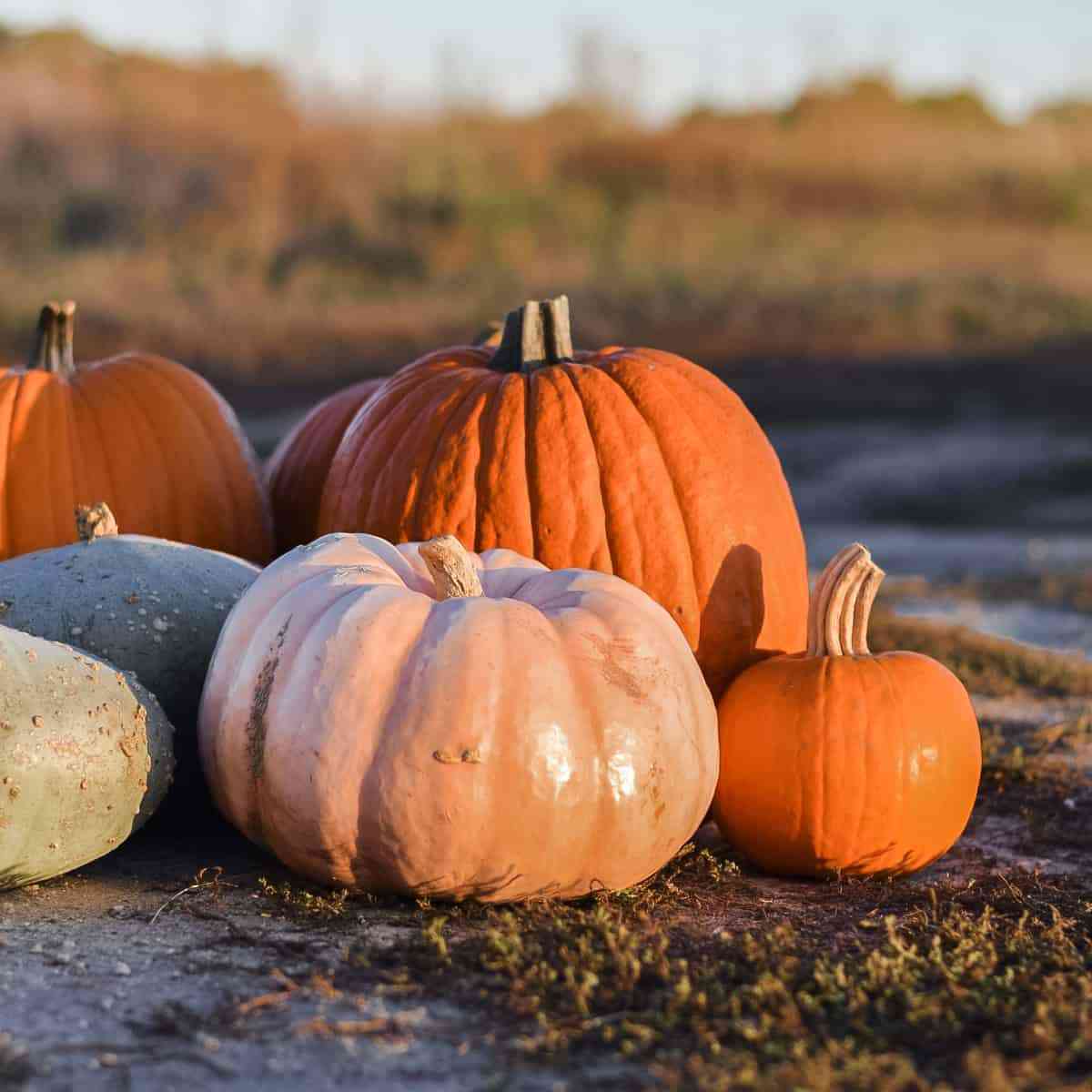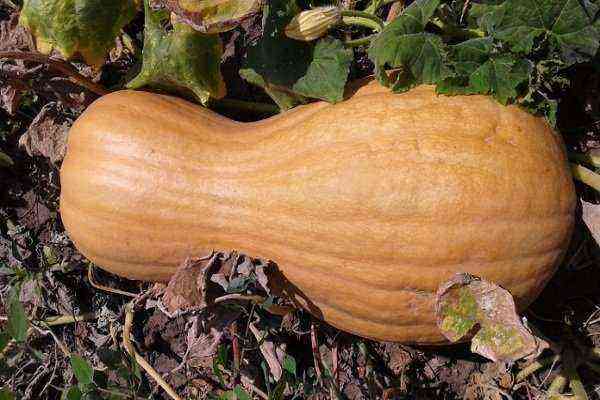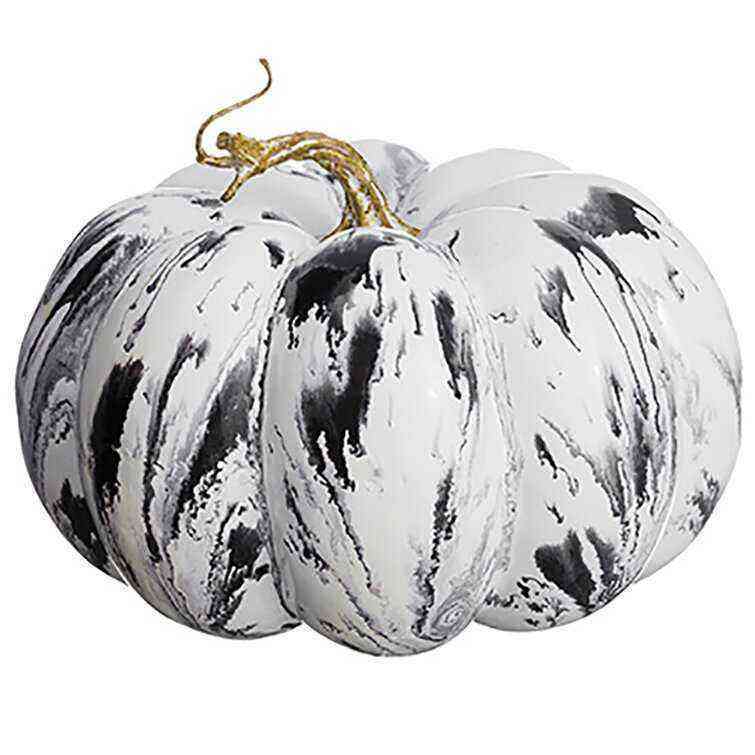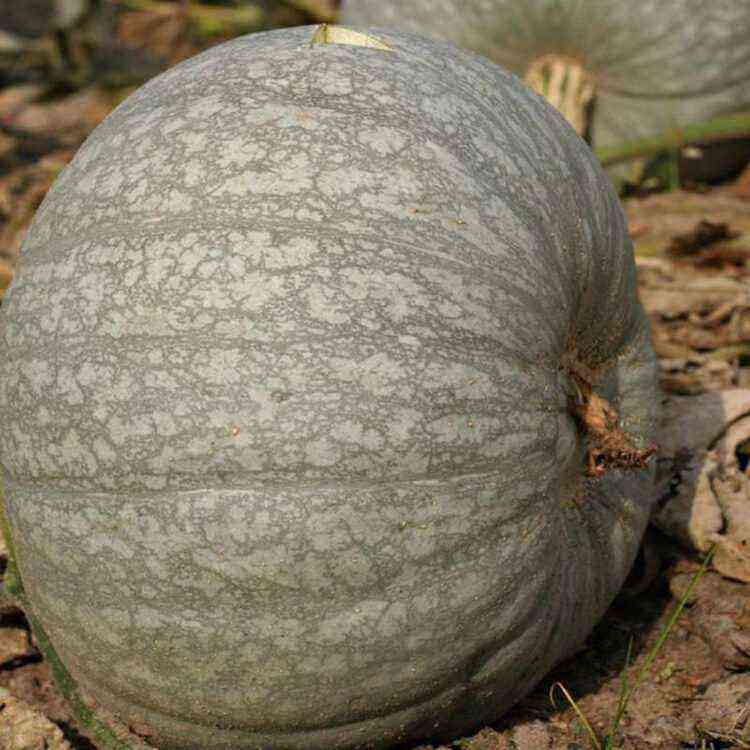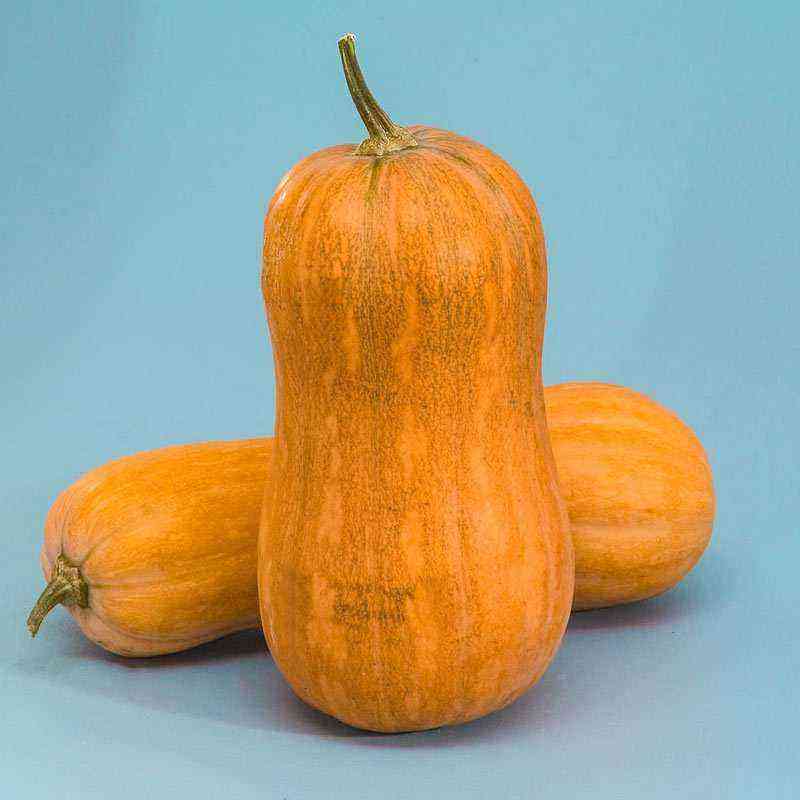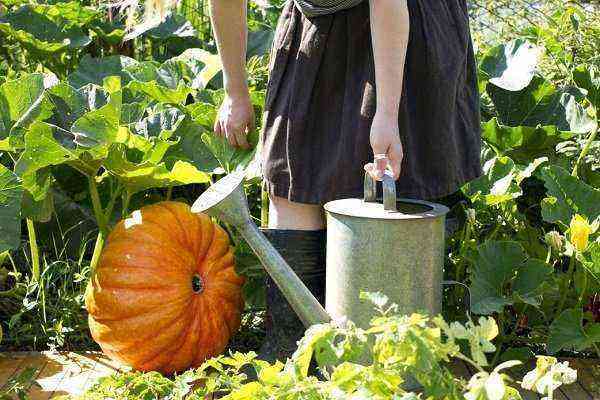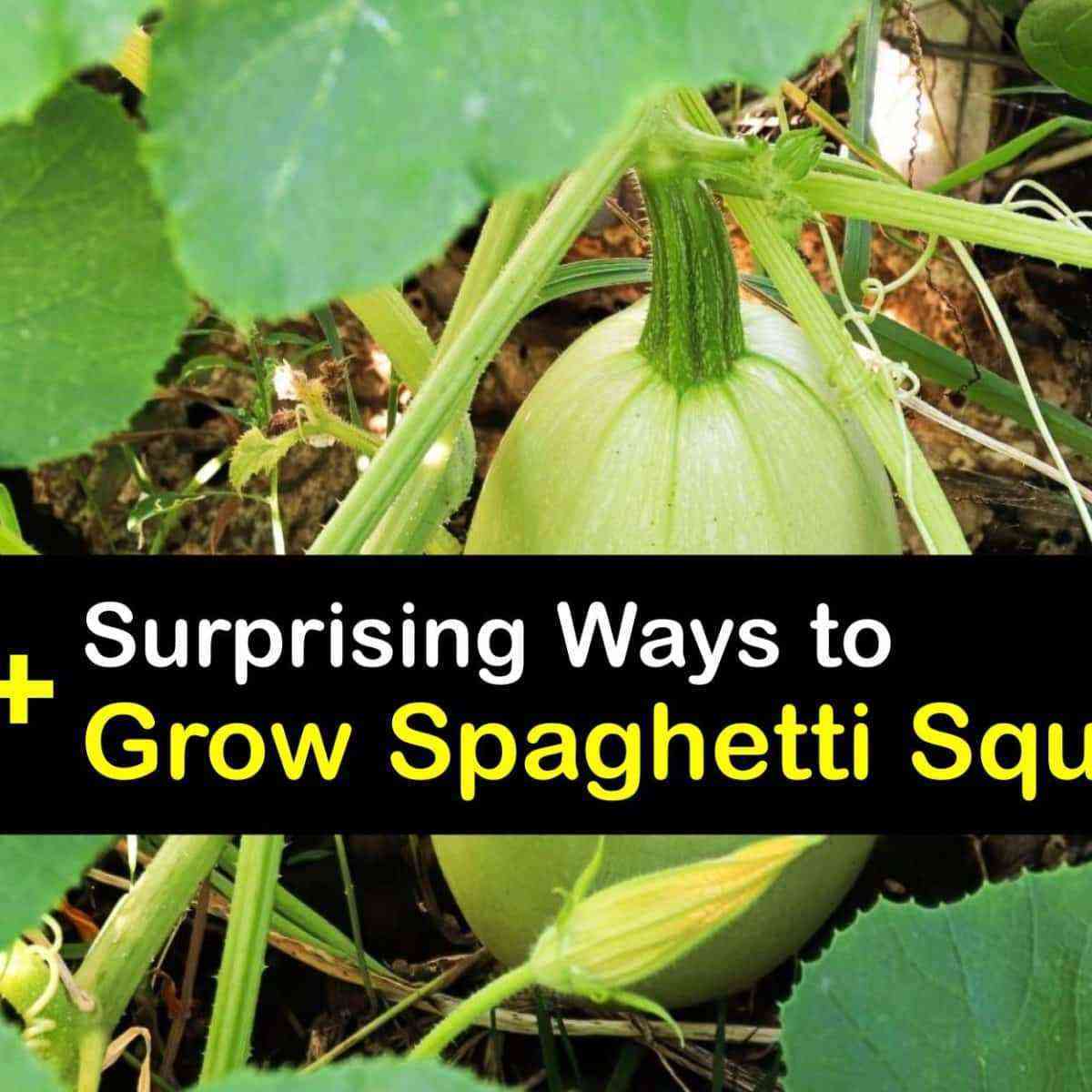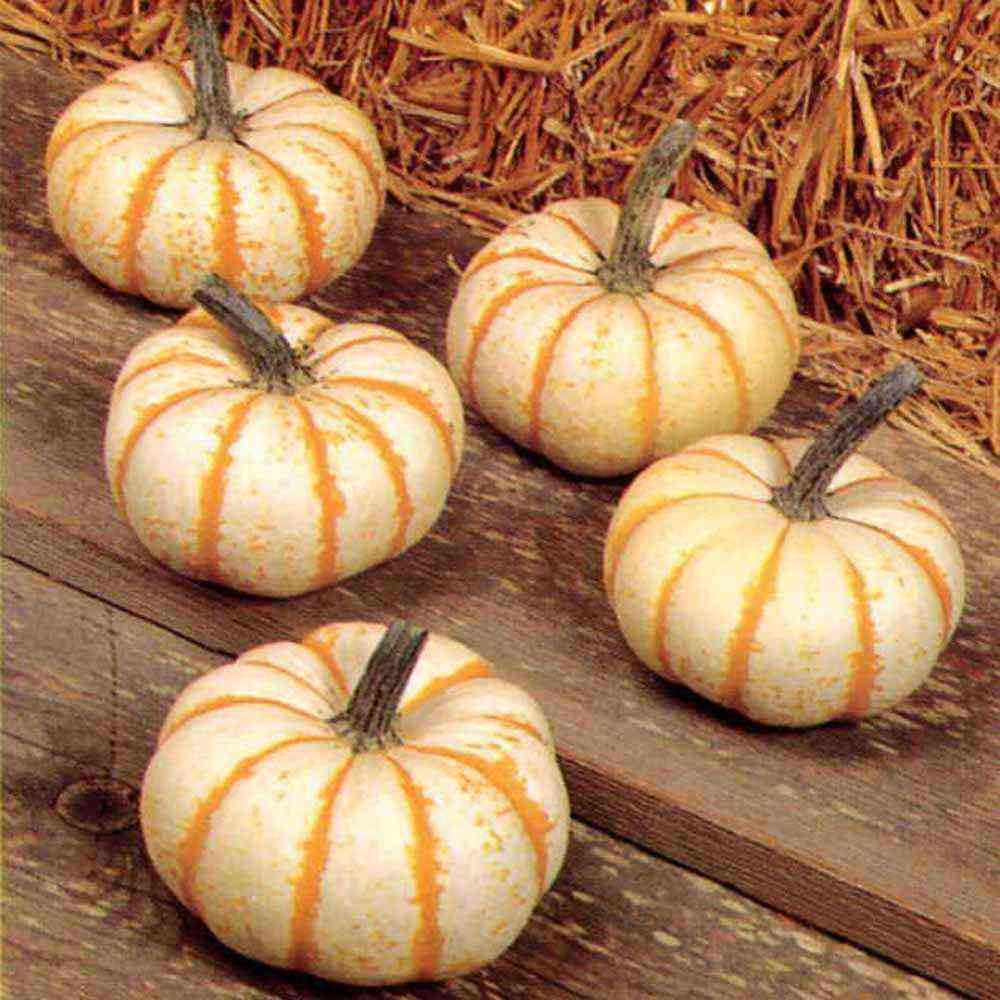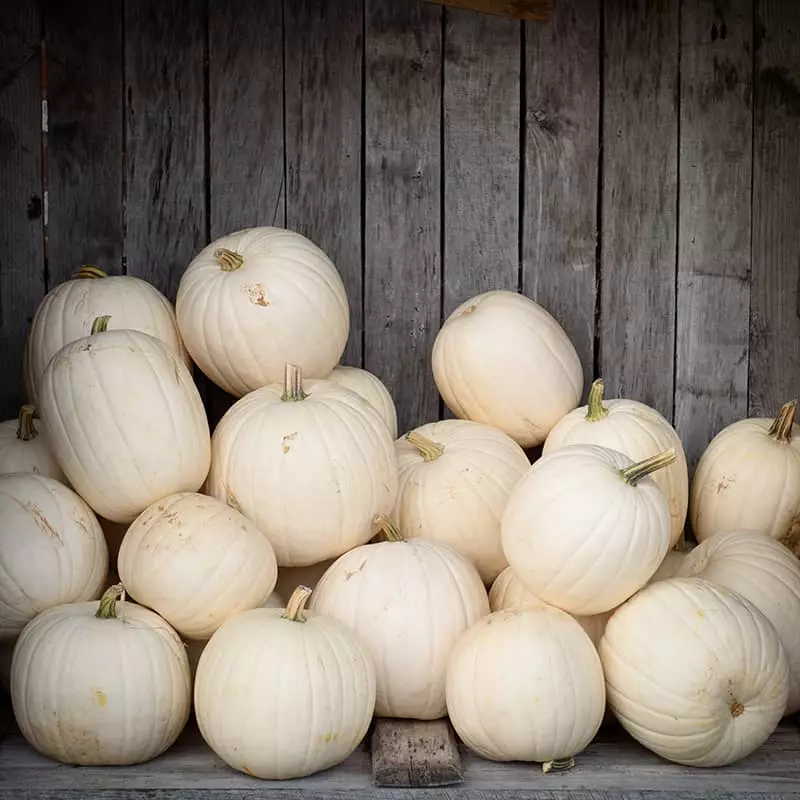Green pumpkin is a variety of pumpkin crops, and the color does not at all indicate the immaturity of the fruit. It can be of different types, including decorative, that is, to create a design in the yard and house. The green color is characteristic of the peel, while the flesh can be orange, yellow, white, etc. The surface is usually covered with patches or stripes of a different shade.
Description of green gourd
An unripe pumpkin of other varieties over time acquires a different shade (peculiar to the variety). The green type of culture does not change color, since it is its natural.
General characteristics of green pumpkins:
- the pulp is juicy, sugary and slightly fibrous;
- the taste is usually sweet, the aroma is pronounced;
- the color of the pulp is most often saturated orange or yellow;
- purpose – cooking, desserts, juices, baby food;
- plant type – creeping;
- the root system is powerful, with a main stem up to 3 m and lateral processes that extend along the sides to an area up to 5 m in diameter;
- leaves are large five-sided green;
- shoots with thorns and hairs;
- the average length of the vine is from 5 to 8 m;
- fruit weight from 10 to 15 kg;
- the surface of pumpkins is rough, pimply or smooth, rather dense;
- shape round, pear-shaped, oval.
In the last days of the growing season, green varieties become lighter. Stripes and all kinds of inclusions form on their surface.
Green pumpkins are divided into annuals and perennials. According to the type of growth of the aerial parts are classified as follows:
- Long-tailed look. The shoot necessarily spreads along the ground, has a maximum length of the main shoot. There are many lateral branches. When growing, to save space, gardeners run lashes over fences, supports, and other devices that tendrils can catch on.
- Bushy view. The lashes are shortened (up to 2 m), lateral shoots are either absent or there are too few of them, and the internodes are next to each other. It grows separately in open beds.
Hard bark varieties
The Latin name for hard-barked varieties is Cucurbita pepo. The variety is characterized by rapid maturation, excellent taste of seeds, which may not have a peel. Among the shortcomings, weak sweetness and a short shelf life are distinguished.
Freckle
Bush pumpkin, belonging to an early ripening variety. The term for reaching technical ripeness is from 90 to 100 days. It is considered compact (does not take up much space on the site).
Description:
- shape rounded-flattened;
- characteristics of the pulp – light orange, juiciness and tenderness of the structure, with a pear flavor;
- features of the fruit – the color is light green, on the surface there are freckled spots of a pale yellowish tint;
- weight from 0,8 to 2,0 kg;
- preferred growing region – St. Petersburg, Moscow region and other regions with frequent rains and temperature changes;
- application – for all purposes, but if you make juice, you have to add sugar;
- feature – increased resistance to cold.
Freckle has a high transportability.
Miranda
The variety is included in the gymnosperm group, mid-season variety (maturing period 110–115 days). Scourges are long – up to 7 m, creep along the ground.
Description:
- round shape;
- characteristics of the pulp – orange tint, increased juiciness;
- fruit features – rich green color with white speckles (reminiscent of marble);
- weight – 3-4 kg;
- preferred growing region – any climatic conditions;
- application – since the variety is sweeter than other hard-core ones, it is used for baby food, desserts;
- feature – increased resistance to low temperatures (down to -2 ° C), not used for seedling growing method (exception only in the Northern regions).
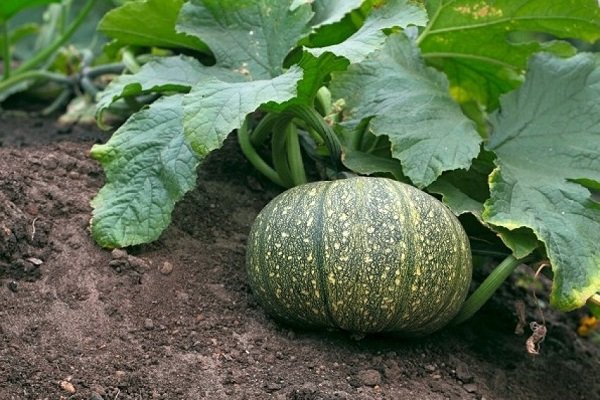
Gribovskaya-189
The variety belongs to the early ripening. The crop is harvested after 80–95 days. View – bush (whips do not spread).
Description:
- the shape is elongated like a zucchini;
- the characteristics of the pulp – a bright yellow hue with a classic pumpkin flavor and aroma, the structure is dense;
- features of the fruit – the peel is dark green, but if stored in a room, it becomes yellow;
- weight from 2,5 to 5,5 kg;
- the preferred growing region is Siberia, the Urals;
- application – standard;
- feature – withstands frost, planted by seedling method, resists pests and diseases.
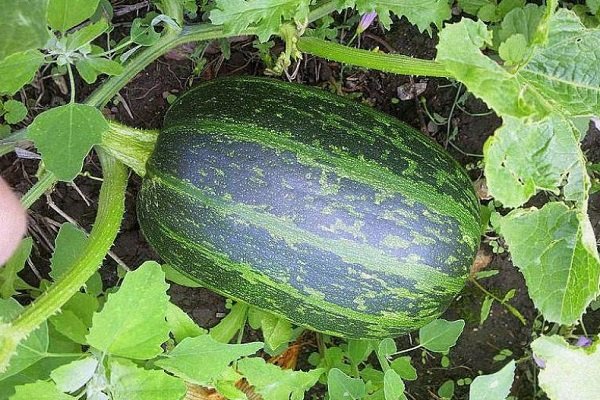
Acorn
Refers to acorn gourd. Characterized as fruity due to increased sweetness. Similar to potatoes, as it contains a large amount of starch. Considered winter. Ripens in 80-90 days.
Description:
- acorn-shaped form;
- pulp characteristics – orange color, squash and nutty taste;
- features of the fruit – the surface is ribbed, the shade varies from light to dark green;
- weight 700–900 g;
- regions with a cold climate are preferred for cultivation;
- application – for desserts;
- feature – grown only by seedlings.
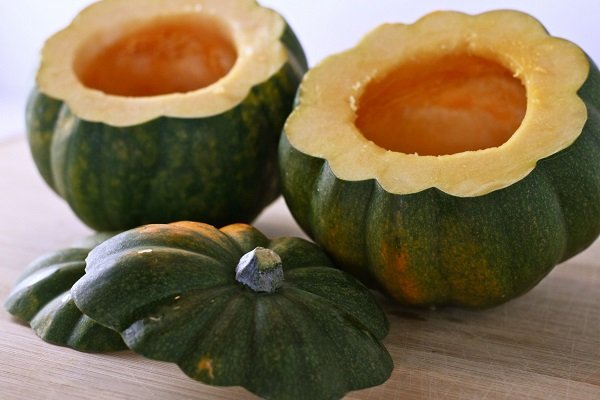
Large-fruited species
The Latin name is Cucurbita maxima. The species is popular due to the high level of productivity, sweetness, large dimensions, storage time even in a warm room.
Farmer
Belongs to the mid-season variety. Technical ripeness occurs in 90-130 days, depending on the weather. It is considered a long climbing plant, as the vine reaches a length of 8 m. It is famous for its excellent keeping quality and transportability.
Description:
- shape is cylindrical;
- the characteristics of the pulp – a bright yellow hue, medium sweetness, juicy and crispy;
- fruit features – dark green color;
- weight from 7 to 11 kg;
- there are no special regional preferences;
- universal application;
- feature – resistance to cold.

Hubbard
This is a large-fruited and at the same time nutmeg variety. The fruits ripen on the 100-155th day.
Description:
- pear-shaped;
- pulp characteristic – bright orange, but dry, has a nutty flavor;
- fruit features – dark green peel with slight ribs;
- weight from 8 to 10 kg;
- grown everywhere;
- application – cooking, desserts;
- there are no features when growing (standard for pumpkin crops).
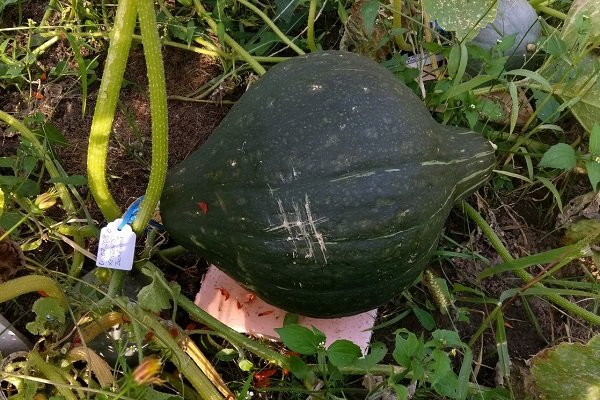
Zorka
It is considered a medium early variety. Technical ripeness is reached in 100-115 days. The whips are powerful and long.
Description:
- shape rounded-flattened;
- pulp characteristics – bright orange color, compacted structure, sweet, but not juicy;
- features of the fruit – the surface is segmented, the shade is grayish-green, light, upon reaching full ripeness, pink or yellow spots appear;
- weight from 5 to 7 kg;
- grown in all climatic zones;
- application – baby food, since carotene predominates in the variety;
- feature – resistance to bacteriosis and powdery mildew.
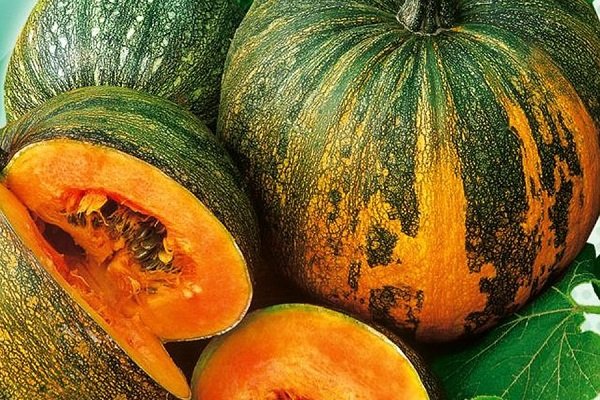
Gymnosperm
Pumpkin is characterized by only one vine, the length of which reaches up to 14 m. It ripens on the 120th day (mid-season), has a lot of seeds. Feature – seeds do not contain a protective shell.
Description:
- round shape;
- pulp characteristics – light green color, sweet taste;
- fruit features – green peel, with vertically arranged orange stripes and light spots;
- weight – 7-9 kg;
- the preferred growing region is from the South to Eastern Siberia;
- application – for cooking, but to a greater extent for collecting seeds;
- feature – requires mandatory pinching.
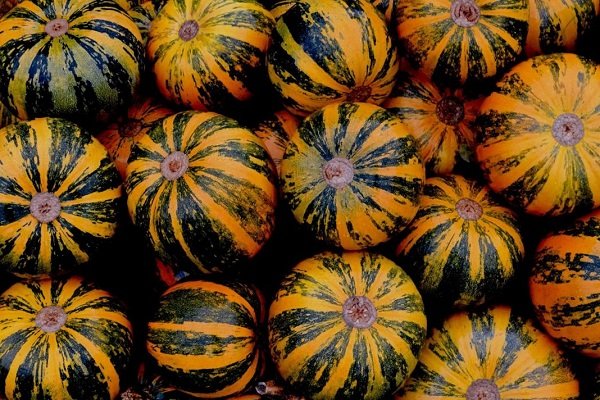
Princess Frog
The variety is medium-late – the crop is harvested after 120-130 days. Refers to the long-braided species.
Description:
- chalmoid form;
- pulp characteristics – yellow in color, medium in juiciness, but crispy;
- features of the fruit – the surface is segmented, bumpy and wrinkled, the shade is green, but varies from grayish to dark;
- weight from 4 to 7 kg;
- preferred growing region – Middle lane, South;
- universal application;
- variety unpretentious to growing conditions.
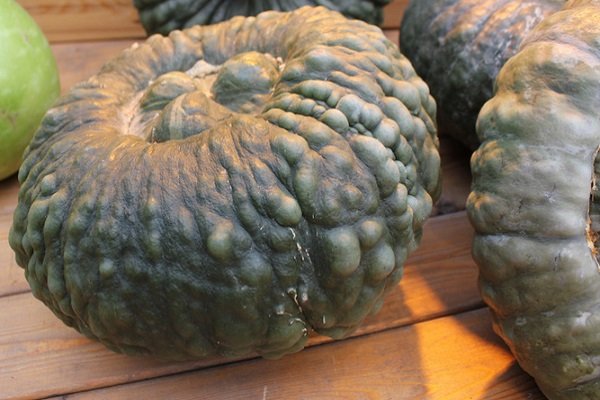
Wax
Feature of the pumpkin in the wax coating on the surface of the fruit. Ripening period – from 130 to 150 days. The stems are thick, the lashes are long.
Description:
- elongated shape;
- pulp characteristics – pale milky, sweet and juicy;
- fruit features – bright green hue, hard shell, smooth surface;
- weight from 10 to 15 kg (reach half a meter in length);
- regionality is not important;
- application – baking;
- feature – does not require specific conditions.
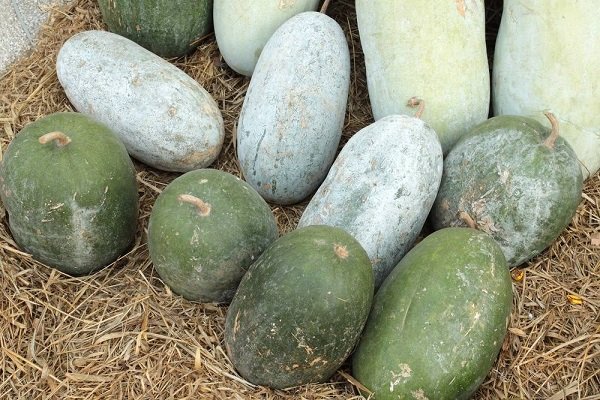
fig-leaved
The fruits ripen in 110–115 days. The bush is distinguished by its compact size, but the main vine is long.
Description:
- oval shape;
- pulp characteristics – juicy, very sweet, white-green color;
- features of the fruit – in appearance it resembles a watermelon, since watermelon-shaped spots of a light shade are located on a dense dark green peel, the surface is warty;
- weight – 3-6 kg;
- grown everywhere;
- universal application;
- features – easily tolerates cold, heat, drought, it is allowed to plant in the shade, but often suffers from fungal diseases.
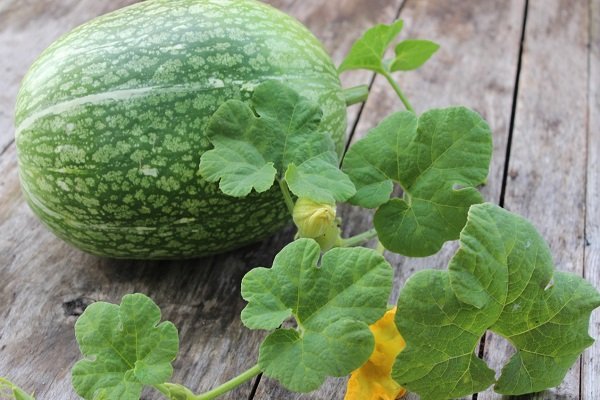
Therapeutic
High-yielding variety of medium early germination (harvest is ready for harvest on the 100th day). The main and side lashes are short. The peculiarity of medicinal pumpkin is used for diseases of the gastrointestinal tract, obesity.
Description:
- flattened shape;
- pulp characteristics – crispy and juicy, sweet and tender, orange;
- fruit features – the surface is slightly segmented, grayish-green in color with light stripes;
- weight about 5–6 kg;
- preferred growing region – Urals, Siberia, Middle lane;
- application – juice, desserts, purees, casseroles;
- there are no special features when growing.

Muscat varieties
The Latin name is Cucurbita moschata. Varieties are considered elite and the most delicious among all varieties (the taste resembles nutmeg). Absolutely all types are universal in use, intended for a warm climate. When grown in the Middle lane, the seedling method is used.
The seeds of all Muscat varieties are small.
Vitamin
The ripening period is medium-late – technical ripeness of pumpkins is reached after at least 130 days. Vitamin pumpkin is distinguished by an elongated lash, the pulp is high in vitamin content, especially carotene.
Description:
- the shape is rounded or elongated;
- characteristics of the pulp – it tastes like a melon, in color it is almost red (fiery orange);
- features of the fruit – the surface is slightly ribbed, green with yellowish patches (if collected in an unripe form and left in a warm room, the peel will turn brown or yellowish), the peel is thin;
- weight – 4-7 kg;
- it is preferable to grow in warm and medium-warm climates;
- varied application;
- feature – it is desirable to plant by seedling method (except for the South), and after transplantation, mandatory shelter with plastic wrap is required for 1–2 weeks.
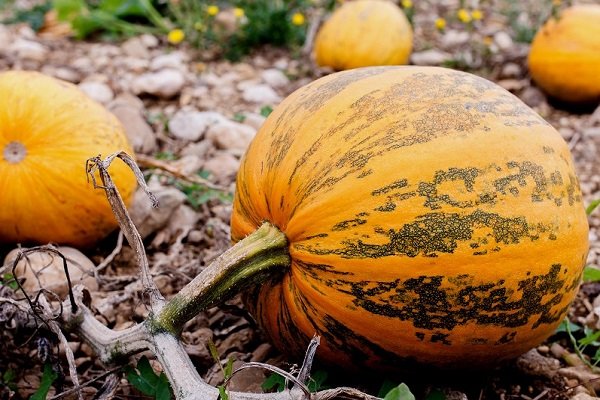
Marina di Chioggia
The variety came from Italian breeders. It is considered late-ripening (the period of technical maturity occurs in 135–150 days). Refers to a long climbing plant. For its unusual shape, it is perceived as a decorative pumpkin.
Description:
- turban-shaped form;
- pulp characteristic – yellowish-orange, sweet and thick, but starchy;
- features of the fruit – the peel is wrinkled and bumpy with a green tint and a bluish coating;
- weight – 10-14 kg;
- has no preferences in regionality;
- application – excellent for fresh consumption;
- feature – requires increased fertility and friability of the soil.
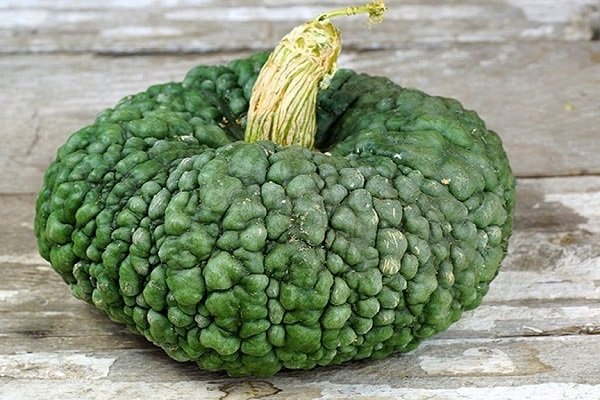
Augustine
Pumpkin belongs to the long-branched early-ripening variety. Ripens in 100-105 days.
Description:
- the shape is cylindrical, but there is a slight constriction and expansion at the flower scar;
- the characteristics of the pulp are yellowish and crispy, juiciness and density are medium, there are few fibers;
- features of the fruit – the surface is smooth, but with a wax coating and light patches, dark green;
- weight from 4 to 6 kg;
- grown in all climatic zones;
- application – for salads, cereals, mashed potatoes;
- feature – the variety is prone to fungal diseases, requires a lot of space, easily tolerates sudden changes in temperature.

Family
The variety is late-ripening – it ripens after at least 135 days. The lashes are long and hard. The seed chamber is very small.
Description:
- shape is cylindrical-elongated;
- characteristics of the pulp – a crunch appears, medium juiciness, high density, pumpkin flavor, orange color;
- features of the fruit – a dark green shade with a waxy coating;
- weight from 8 to 16 kg, but there are giant specimens of 30–35 kg;
- prefers only the Southern latitudes, but seedlings are possible in more middle regions, it is forbidden in the North;
- universal application;
- feature is drought resistance.
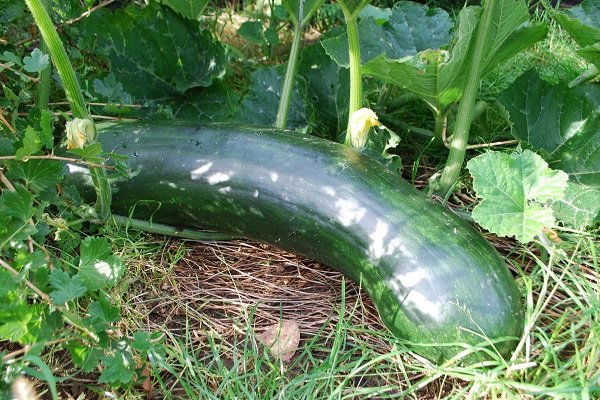
Sweet green pumpkin
Sweet pumpkins got their name due to their high sugar content – about 15%. Despite these indicators, the product is considered dietary (calorie content does not increase much).
Another feature is the versatility of use. Sweet varieties are usually eaten even raw.
Baby
The variety is early. The crop is harvested on the 80th day. View – bush, lashes – shortened.
Description:
- flattened shape;
- characteristics of the pulp – juiciness and medium density, a crunch appears, orange in color;
- features of the fruit – on a dark green background there are gray and brownish shades;
- weight from 2 to 3 kg;
- preferred growing region – Moscow region;
- universal application;
- there are no special features when growing.
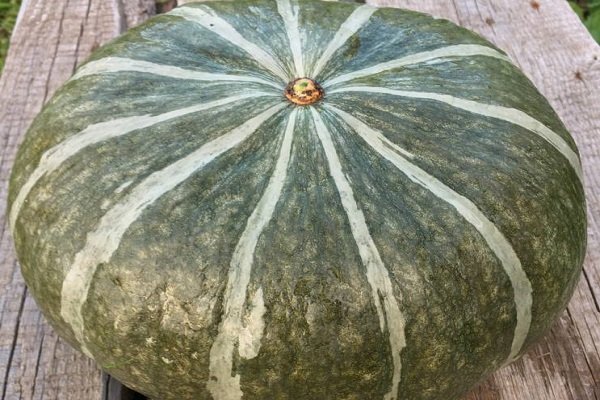
Slasten
A high-yielding variety of pumpkin that ripens 85–95 days after sowing. Feature – the green shade of the peel almost does not change with time. Weaving is average.
Description:
- round shape;
- the characteristic of the pulp is orange, very sweet, but not very juicy, it has a high starch content;
- features of the fruit – a smooth and ribbed surface of green color;
- weight – 5-7 kg;
- preferred growing region – climate with high humidity, Middle lane;
- application – used for any purpose;
- feature – prefers a humid habitat, but does not die in drought (short).
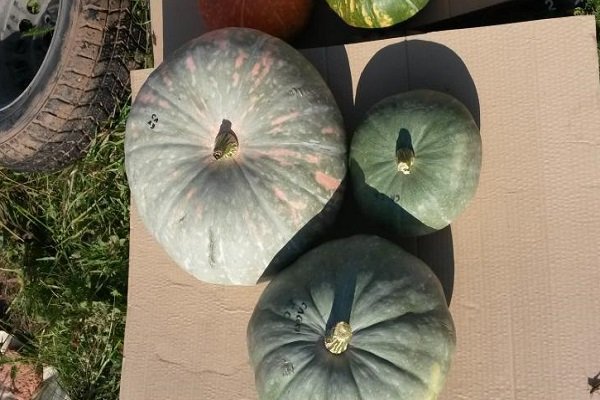
Barn
It is considered the most delicious and unpretentious among mid-season varieties. Ripens on the 120th day after planting. The length of the main stem is about 7 m, the seed chamber is large.
Description:
- the shape is rounded and slightly flattened;
- pulp characteristics – orange, juicy and dense;
- fruit features – rich green color with dark patches or light stripes, smooth surface;
- weight – 4,5-5,5 kg;
- regionality during cultivation does not matter, but in a cool climate it is planted in greenhouses;
- application – best for juices, desserts, jellies, jams, etc.;
- feature – does not require increased soil fertility, prone to diseases.
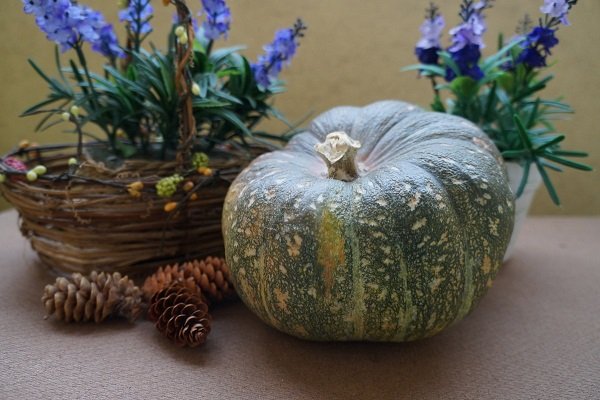
Azure
A variety with a growing season of 100-120 days. The whips are powerful and long.
Description:
- the shape is rounded and flattened;
- pulp characteristics – bright orange color, dense, crispy structure;
- features of the fruit – the main color is dark green, but there is a gray tint on the surface, the peel is ribbed;
- weight about 5 kg;
- any growing region, as it easily adapts to cool conditions;
- application – for milk porridges and puree soups;
- feature – prefers sandy soil with increased fertility.
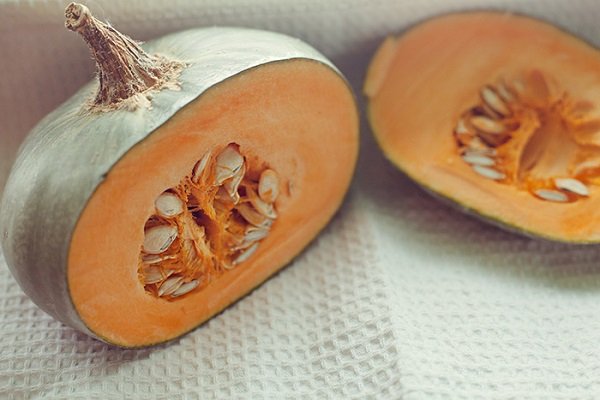
Winter sweet
Belongs to the mid-season variety. Ripens at least 110 days. Considered climbing
Description:
- the shape is spherical-flattened;
- pulp characteristics – orange shade, dense structure;
- features of the fruit – the peel is segmented with bumps, the color is closer to dark olive (green with gray), there are light gray spots;
- weight from 5 to 12 kg;
- the preferred growing region is Siberia, the Urals;
- application – home cooking, canning, eating raw;
- feature – not afraid of drought and cold, does not accumulate nitrates, resists powdery mildew and anthracnose.

decorative types
The bulk of decorative pumpkins is considered inedible, as it has no taste, smell, or sweetness. If you taste such a fruit, you might think that you are chewing grass. A variety is used to decorate the garden plot and extract the oil. But there are varieties that are acceptable to use.
Laguaria
This is a very unusual type of pumpkin, which is rarely found in our latitudes. There are a number of titles:
- gourd;
- bottle gourd;
- serpentine;
- Indian cucumber;
- Vietnamese zucchini;
- calabash.
Description:
- the shape is spherical, oblate, serpentine, bottle-shaped, cylindrical, pear-shaped, depending on the variety variety;
- the characteristic of the pulp is juicy, sometimes fibrous, but shrinks upon reaching biological maturity;
- features of the fruit – in adulthood, the peel becomes stiff, the color is different;
- weight from 2 to 32 kg, but there are specimens that have reached 150 kg;
- application – in cooking, cosmetology, art (make vessels, musical instruments, etc.), as a decoration.

Marble
Another edible gourd with a decorative appearance. The peculiarity lies in the original color. Marble gourd is a late variety, ripening in 140–150 days.
Description:
- round shape;
- pulp characteristics – juicy, orange, very sweet (up to 12%);
- features of the fruit – there is segmentation and pimples;
- pumpkin surface – has a rich green color and white stains that create a marble pattern;
- weight about 5 kg;
- the preferred growing region is the Caucasus, the Volga region;
- application – decoration, cooking;
- feature – the fruits crack from excess moisture or drought.
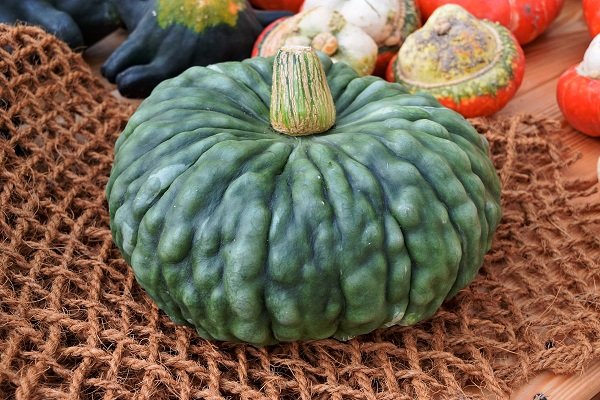
Cucurbita
Cucurbita, which in Latin means pumpkin, has a variety of varieties for decorative purposes – Crown, Baby Boo, Little Red Riding Hood, etc. Pumpkins are distinguished by bizarre shapes.
If there is a desire to grow this type of vegetable (to decorate the garden), it should be remembered that the harvest must be carried out strictly before frost. Otherwise, the pumpkin will disappear.
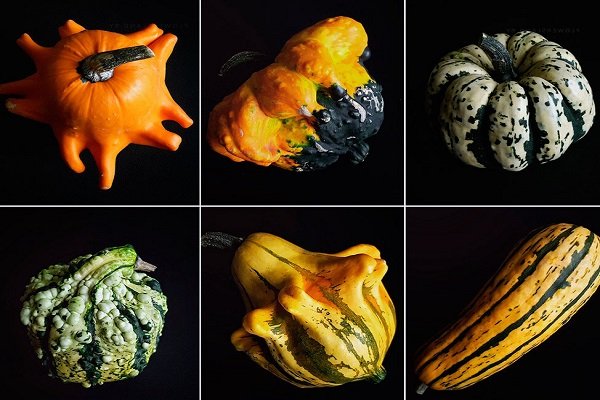
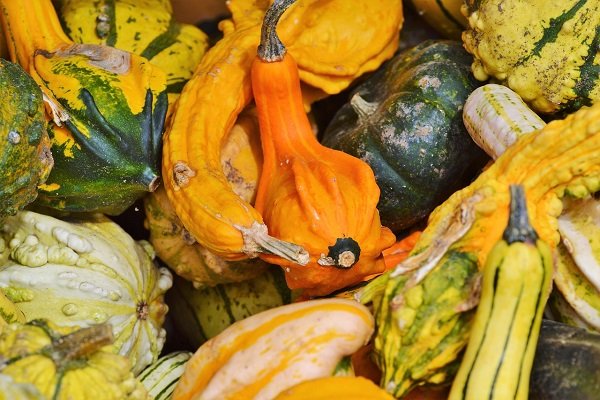
Features of the cultivation of green pumpkin – planting, growing and care
Green pumpkin is planted in 2 ways – seedlings and immediately in open ground. This is a thermophilic culture, so it is important to choose a well-lit area. A prerequisite is soil fertility and the following indicators:
- acidity level – 6,5–7,5 pH;
- structure – loose, light;
- nutrients – phosphorus, nitrogen, potassium.
Everything:
- good predecessors are potatoes, carrots, onions, cabbage, beets;
- undesirable – all types of pumpkin crops, zucchini, squash, nightshade, cucumbers.
Green pumpkin is not very whimsical in growing and caring, but be sure to follow the conditions:
- Moisturizing. Do not allow the formation of a dry crust. It is best when the soil is always wet. Water only in the early morning.
- Loosening. The root system requires aeration. Do the procedure 2-3 times a week.
- Top dressing. Fertilize about 4 times during the entire growing season. Use mullein, chicken manure, wood ash, herbal infusions. Sometimes (if the soil requires) purchased mineral preparations are used.
- Mulching. It is necessary to maintain moisture and friability. Place straw, peat, sawdust, hay under the pumpkin.
Reviews
Natalya Gulyaeva, 49 years old, Krasnodar Territory
For 7 years I have been planting green varieties of pumpkin in the garden. To be honest, I tried many types, but chose Sweetie. She is really sugary. I make juice out of it, preserve it, cook porridge. In a word, universal.
Eugene, 45 years old, Moscow region, Dolgoprudny
I plant green fruits for variety. They look original on the beds next to orange pumpkins. And most importantly, they do not require any specific care. Everything is standard. From what I sowed, I advise Augustine, Azure, Freckles, Gymnosperms.
Green pumpkin is considered a healthy, nutritious and at the same time dietary product. It is used for cooking various dishes, preservation, as animal feed. Varieties differ among themselves in the hardness of the peel, the level of sweetness, size and other indicators.

